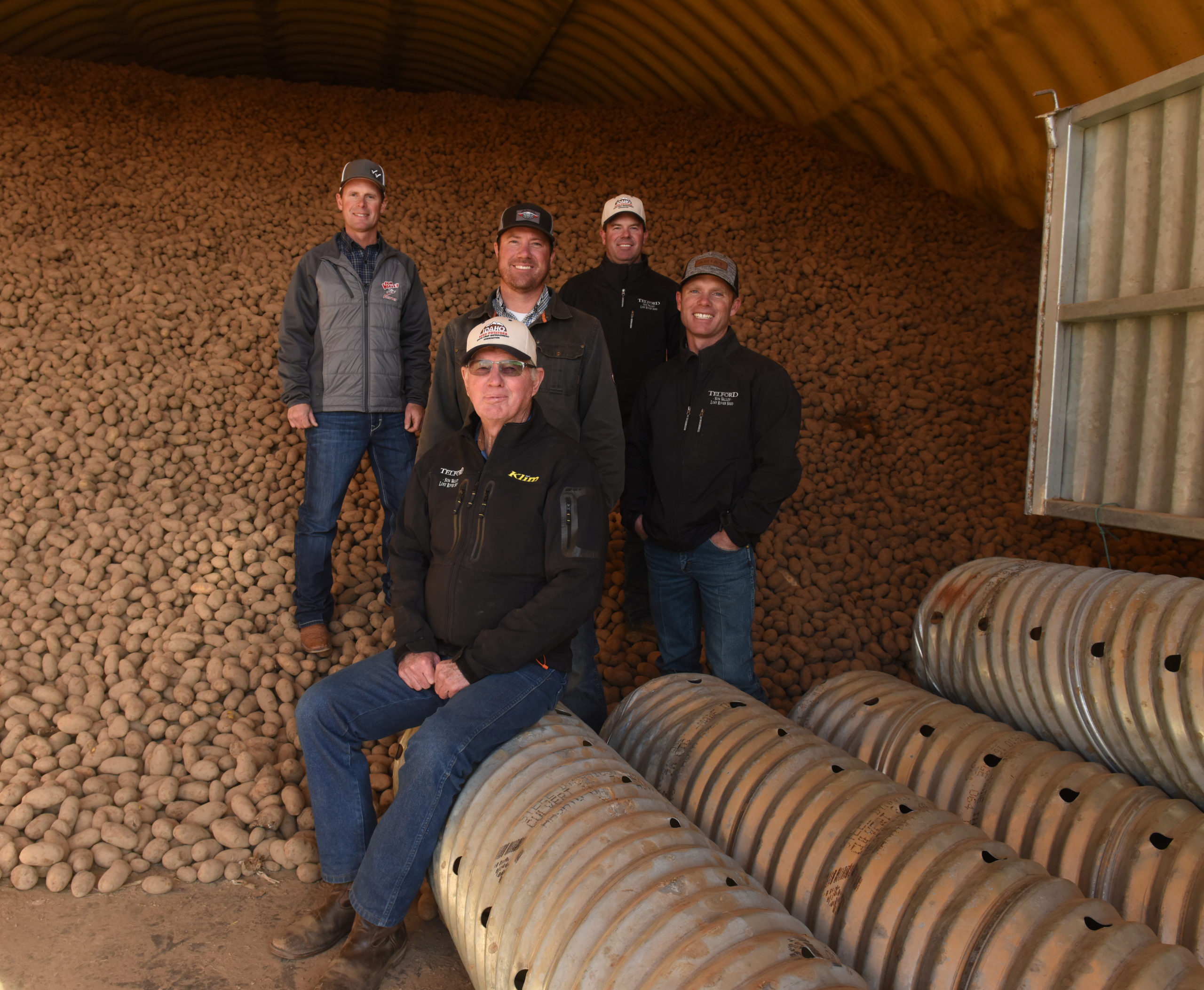May 11, 2017Considerations for developing a fertilizer program
The following should be considered when developing a fertilizer program for potato production.
pH
pH is an important factor in any fertilizer program and in controlling common scab. As pH increases to near 6.0 plant nutrients also increase and toxic elements become less available, thereby providing optimal growing conditions from the standpoint of nutrients. Where scab is not a problem, pH levels should be as high as possible (up to 6.0). Soil pH should be between 5.0 and 5.2 to control common scab. Scab resistance varieties should be grown at high pH levels. Potato breeders are working on developing scab resistance lines and in the future hopefully we will not have to adjust the pH downward to control common scab.
Salts
The carriers of nitrogen and potassium are the primary fertilizer components that create salt problems. Salts are a factor when high concentrations of fertilizers are applied in bands, as they are in potato production, and applied under optimal soil moisture conditions and then conditions turn dry. The salts in the fertilizer bands move with the soil moisture to the surface and concentrate causing root “burn” thereby retarding emergence and subsequent growth. The potential for salt injury is greatest in sandy soils and when fertilizer is placed close to seed pieces.
Specific Nutrients
Nitrogen
Results from fertilizer experiments over the years have shown that rates between 150 and 175 lbs N/A are adequate for maximum economic yields of commonly grown varieties. Excess nitrogen delays tuber initiation and maturity thereby potentially reducing the yield of early harvest and increasing the potential for skinning and bruising of main season varieties. Applying between 75 and 120 lbs N/A in bands at planting is a conservative amount of nitrogen to apply. Applying more that that increases the potential for groundwater contamination by leaching nitrogen out of the root zone. The at-planting amount of nitrogen can be supplemented by top dress or side dress nitrogen when plants are approximately 4 to 8 inches tall. This would give the most efficient application of nitrogen as well as minimize the threat of groundwater contamination.
Phosphorus
Phosphorus levels in most potato soils are quite high. However, because pH levels are near 5.0 or below in many potato soils a considerable amount of phosphorus is not available. Increasing the pH to 5.2 to 5.5 improves phosphorus efficiency in the soil. Where pH and/or soil phosphorus levels are low or when iron plus aluminum levels are greater the 200 lbs/A, phosphate applications should range from 200 to 240 lbs/A. If the pH is greater that 5.2 and phosphorus (P2O5) levels are high, the amount of phosphate to apply should range between 120 and 200 lbs/A.
Potassium
Many potato soils are naturally low in potassium. However, fields that have been in potatoes for many years may have high potassium levels. If potassium levels are low, growers should consider applying at least some potash (K2O) as a pre-plow or pre-plant broadcast application. Keeping potash levels relatively low in fertilizer bands decreases the potential for fertilizer salt injury. Potash should be applied at approximately 150 lbs/A in field that have high potassium levels and at 240 lbs/A in fields where potassium levels are low. When high rates of potash are needed, broadcast one-half prior to planting and band the other half.
Magnesium
Potatoes have a relatively high demand for magnesium. If a soil is at least 5.0 or magnesium levels are greater than 100 lbs/A, magnesium is not needed in fertilizer bands. At pH levels below 5.0 or when soil magnesium are less 100 lbs/A, 30 lbs/A of elemental magnesium (50 lbs of MgO/A) are recommended.
Calcium
Currently there is considerable information about the benefits of calcium for potatoes. The key factor for proper calcium nutrition in potatoes is a combination of having adequate calcium in the soil and optimal moisture through the growing season. The best way of having adequate calcium in the soil is to apply lime to bring the pH to acceptable levels. Another means of applying calcium to the soil is to apply gypsum (calcium sulfate). Gypsum supplies calcium without changing the soil pH. (An application of 1400 lbs of gypsum will supply approximately 300 lbs calcium/A.) Foliar applications of calcium and sidedress applications of calcium nitrate (at rates commonly applied in the Northeast) do little to provide adequate calcium for plant nutrition. To get the full benefit from calcium the element needs to be in the zone of tuber formation and moisture needs to be maintained at optimal levels through the growing season.














